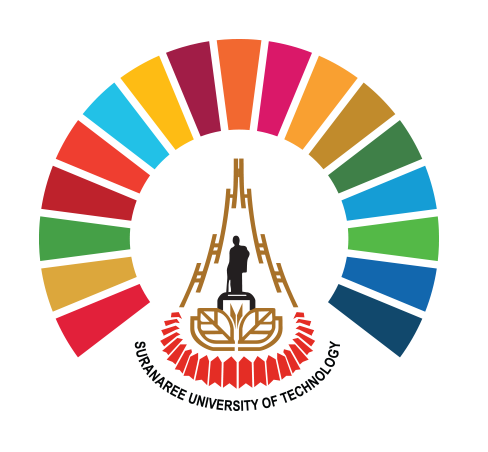Inorganic Waste Treatment
/3_8/001.jpg)
Description:
1. Comprehensive waste management plant
The Integrated Solid Waste Sorting Plant manages organic and inorganic waste using Mechanical Biological Treatment (MBT) or Composting technology. Reduction choppers, composting systems, and gliders to sort organic fertilizers and plastics to process waste into energy. The by-products are soil amendment materials and Refuse Derived Fuel (RDF). Recycle Biomass fuels, waste fuels and soil amendment materials 1,833 tons/year, or 95.13%, of which was sold as income to the Environmental Fund in the amount of Baht 0.93 million/year and allocated funds for research and environmental protection activities within the university.
Link :
/3_8/002.jpg)
2. Prototype of oil production plant from waste fuel
The system uses 5 tons of plastic waste per day. It can produce about 4,000 liters of oil per day using plastic waste from the MBT system and waste fuel plant (RDF-4) of the university as fuel for the system's operation. Through this process, a blended fuel product is obtained. The resulting oil is distilled using a prototype. The university's commercial refinery can be used for engines and machinery.
Link :
http://biomass.sut.ac.th/biomass/?page=Article/articleShow&id=5
/3_8/003.jpg)
3. Organic Waste Composting Machine
The university has established a project to manage organic waste at the source by campaigning for the separation of food waste in office buildings, dormitories, academic buildings and cafeterias within the university and bringing it into the process using organic fertilizer production technology through a prototype machine of the vertical stirred aeration organic fertilizer production system SUT-MBT Pilot Plant with a capacity of 0.5 Tones/Batch (8 m3). It defines the carbon to nitrogen ratio (C/N ratio) used for decomposition in the fermentation process. It has a fermentation period of 45-60 days (about 6-8 weeks) and controls the system's temperature to be within a range suitable for microbial working conditions. The temperature is controlled to a range of 60 degrees Celsius.
/3_8/004.jpg)
4. Biogas Power Plant
The university has researched and developed to increase the efficiency of biogas production from Napier grass and municipal waste (CSTR prototype plant level of 300 cubic meters) and found that the biogas production potential of mixed raw materials is 62.56 cubic meters per ton of raw materials. The average proportion of %CH4 is approximately 55.20%, with biogas production capacity of 182 cubic meters/day (feed rate of Napier grass raw materials 1.5 tons/day and pretreatment organic waste 1.5 tons/day, including mixed feedstock feed of 3 tons/day). Using pretreated organic waste from the SUT-MBT system as raw materials mixed with Napier grass to produce biogas can be expanded to industrial applications.
/3_8/005.jpg)
5. Waste Fuel (RDF) Project from Old Mattresses
Suranaree University of Technology, in collaboration with Wong Commercial Korat Top Secret Co., Ltd., has taken away old mattresses. 14.14 tons of mattresses were converted and used as fuel for producing electrical power. The mattresses have a good heating value, low humidity, size and density suitable for transport or sintering, and have a consistent chemical and physical composition. It is suitable for furnace-boiler feeding (approximately 15-30 mm in diameter and 30-150 mm in length) and is denser than conventional solid waste and biomass. It is suitable for storage and transportation and has a high calorific value equivalent to biomass. About 13-18 MJ/kg and low humidity about 5-10%
/3_8/006.jpg)
